My memory served me both well and ill on this long day’s walk from the hilltop city of Langres to the riverside idyl of Leffond. I had booked into the gîte above the Mairie at Leffond the day before, but now as I busied myself for departure, I had it firmly set in my mind that I was staying at Coublanc, the preceding village.
Added to this, I wanted to finish the latest video I have been sending to the primary schools with my progress. All in all, it was a late start.
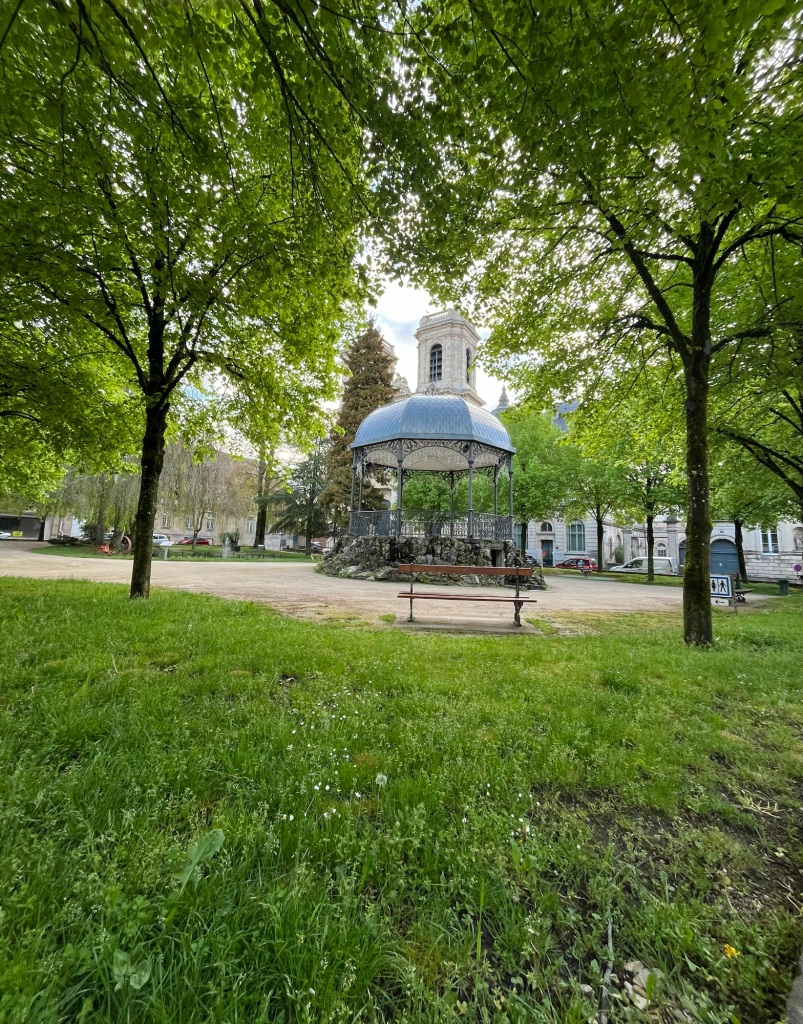
Langres had looked rather lovely on early foray to the boulangerie, but the time I set out pack on back, clouds had once again begun to appear.
I was to follow the route south out the city, suggested in the Lightfoot Guide. This route avoided the long walk west around the Lac de la Liez, and the towns of Chalindry and Torcenay. In effect I was saving a day’s walk.
This route began by picking up a voie vert, or green way out of Langres. First through a tree lined promenade and then picking up a disused railway line.
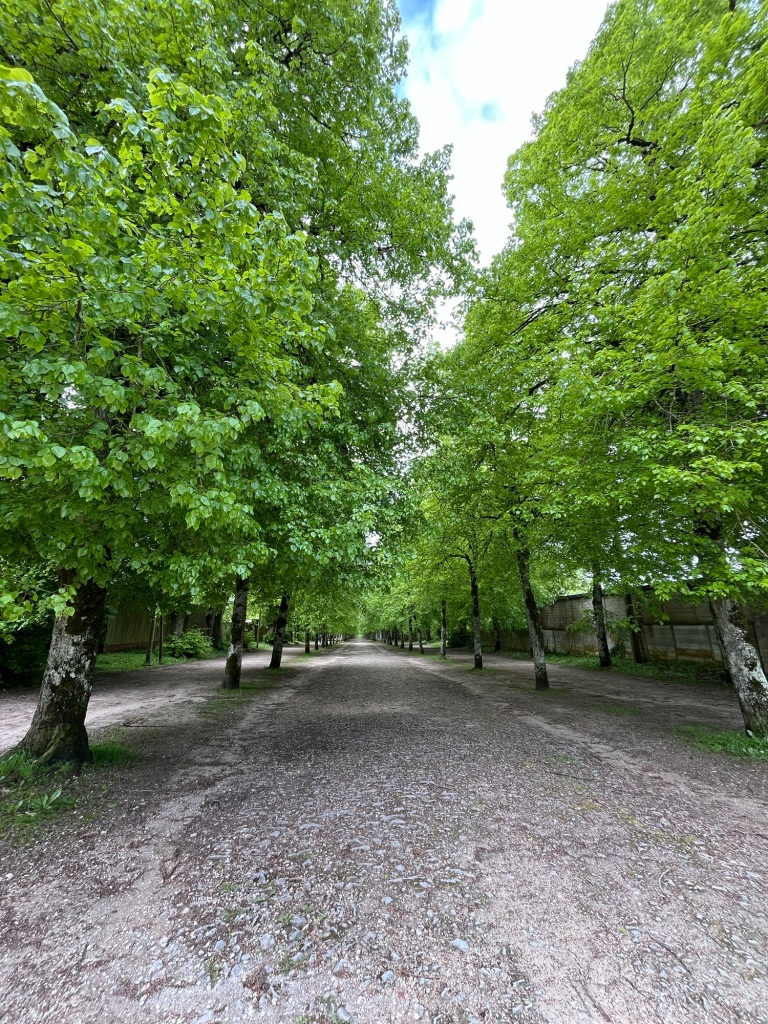
It was a very pleasant walk, and less steep than I had anticipated. I knew that the official route would have been less forgiving on the knees. With the exception of a very low fighter aircraft rending the air asunder, all was sweetness and birdsong. A crocodile of pre-schoolers waved and emitted a chorus of “bonjour monsieurs”.

The railway line brought me out into the suburb of Sts Geosmes. Interesting that it had its own Mairie and sports hall. The latter seemed to be doing a good trade in ladies of a certain age armed with yoga mats and grim expressions.
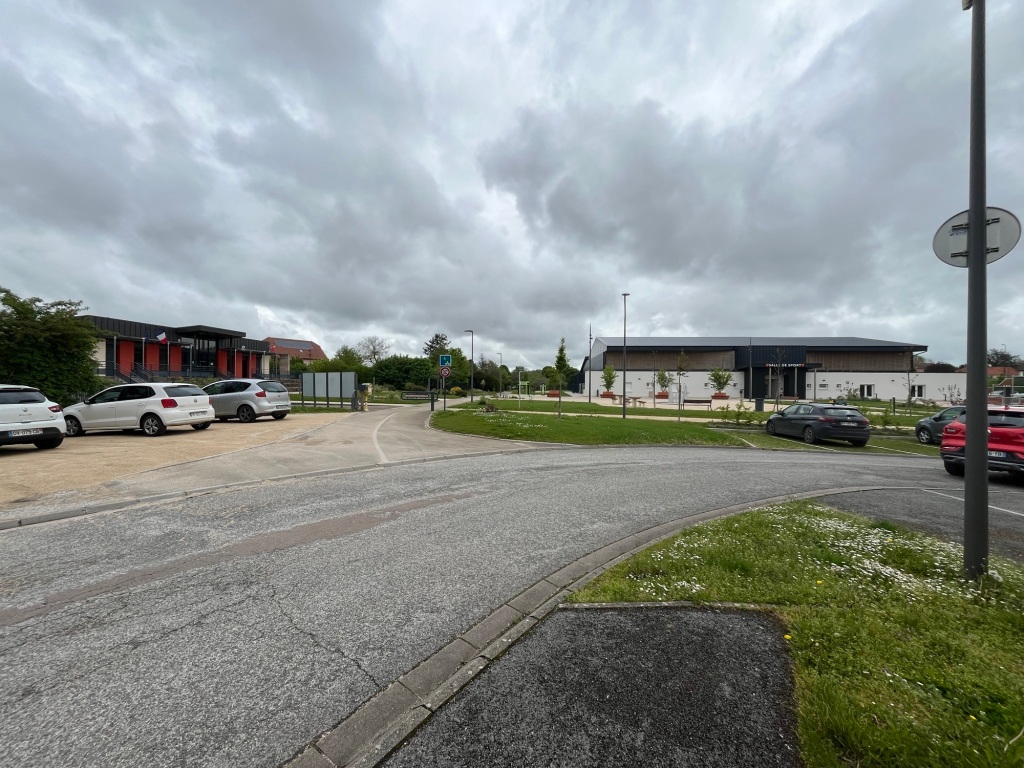
Shortly afterward I met a short, wiry man who identified me as a pilgrim. We had a conversation where I tried to remember large French numbers to talk about distances and then he proceeded to tell me at great length of his own pilgrimage to Santiago di Compestella. He seemed very keen to tell me that he had set out from this very spot (which I suspected was an exaggeration).
He asked me about accommodation and before I was able to formulate a response, he launched into a monologue about the virtues of camping along the way. His tent weighed 1kg and he could camp anywhere. “You should have a tent, monsieur,” he told me firmly, complete with a prod from a Gallic finger for good measure.
I thanked him for his advice and made my excuses. I really don’t think I could have continually camped along the way. It was hard enough to dry kit some days in a building, let alone inside a tiny tent. I think I would have been driven mad continually camping; either that or carried it the whole way and only used it once.
The route now took me through a large industrial estate and out onto the D122. This, I thought would be a quiet road: I was wrong.

This proved to be a 10km stretch of road where I had to be on high alert for passing cars, stepping aside to give more clearance and often marvelling at how close some cars passed. I would not recommend this route; I suspect the bike alternative shown in Sandy Brown’s book, utilising the D17 would be a better shortcut. I discovered later that this route was also a locally designated walking route.
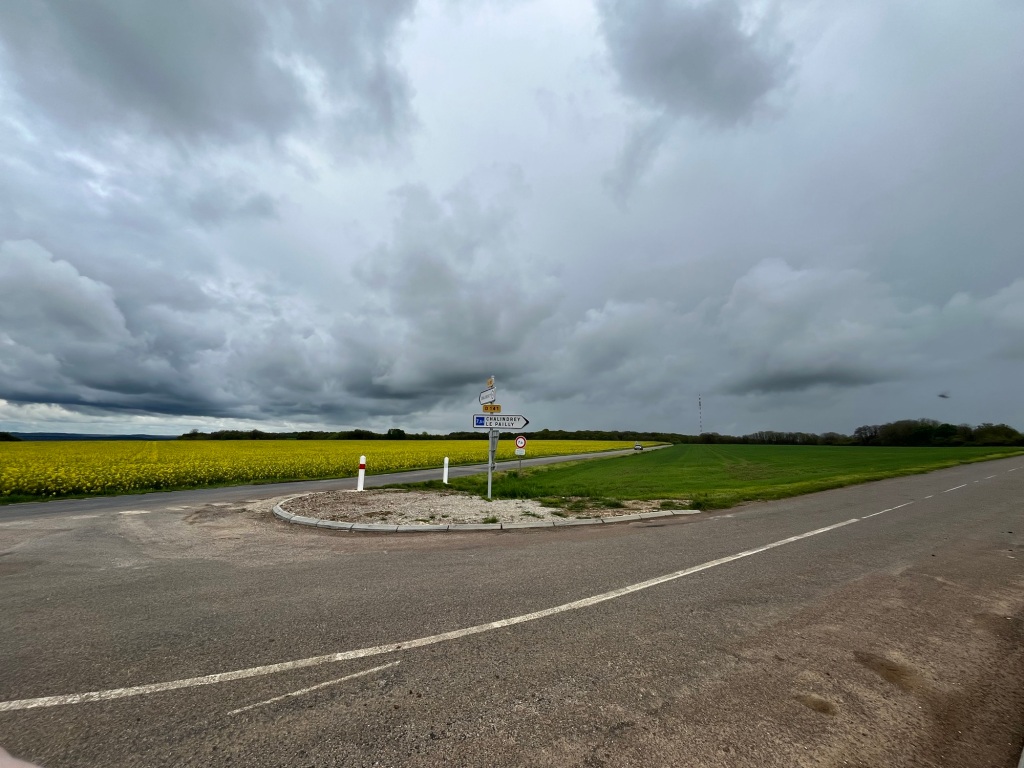
The clouds were again building, and I admit they matched my mood somewhat. I paused to examine a car that had been abandoned by the side of the road. The offside front wheel had somehow sheered from the hub. A note, in faded biro stated that the owner would return to recover the vehicle. I wondered if they ever would.
Contemplating whether there was some sort of metaphor or meaning in the plight of discarded vehicles on roadsides, I looked up and noticed a Citroën 2CV hurtling along the road, the driver frantically flashing their lights. I half raised a hand to wave when I saw another 2CV travelling in the opposite direction, driver waving also. I smiled to myself. I was glad people still do this. We used to have a “new” beetle, and drivers of the same car used to wave at us. Of course people with proper, air-cooled engine at the back, bag of sand in the front facing boot in winter, authentic VW Beetle drivers wouldn’t wave at us modern imposters.
My schoolfriend James had one of these venerable and idiosyncratic machines. I think of all the first cars owned by us sixth formers, his was the coolest. (And I say that with regret, for I drove a Y-Reg Vauxhall Chevette! I comforted myself with the knowledge I was the only driver of my cohort to own a four-door car, and a boot one could rustle a sheep in).
Memories of James’s two tone (white and yellow) beetle occupied my thoughts for several happy kilometres. It was the first car I had a go at driving; around a field at Guarlford being used as parking for a village fete at which the school band were playing.
Earlier, travelling in the cramped back seat along with another friend Alan, I thought I might disappear in a blaze, not of glory, but exploding bits of engine. James was driving back from Malvern along the narrow, bendy and hedge-lined Cowleigh Road. As a learner he had his dad in the passenger seat. As we came out of a bend and James put his foot on the accelerator, we heard the words “I can’t make it stop, Dad.” The engine roared immediately behind Alan and I, and we took off down the hill like a rocket.
After a few seconds of difficult careering along the lane, James took the car out of gear and we pulled up sharply in the car park of a cider farm shop. With engine screaming we did our best to bail out over pushed forward seats and long, looping seat belts. James switched off the engine and somewhat out of breath we examined the engine. James’ dad diagnosed a broken throttle spring and with the deft use of pliers, we were once again on our way.
As I began my descent into La Pailly, I chuckled at my favourite scrape that Beetle got into. I wasn’t in the car at the time, but Alan was. Travelling along Leigh Sinton Road, presumably having picked Alan up from home, a lighter was required. “I’ve not got one on me,” said Alan. “There’s one in the glovebox,” came the reply from James. “Were coming up to a straight bit of road, I’ll take the key out of the ignition, you unlock the glovebox and give me the key back.”
This plan went well initially. James accelerated. James removed the key and allowed the car to coast. James passed the key to Alan. Alan dropped the key in the footwell. (This wasn’t part of the plan).
While Alan was fumbling for the keys, this venerable yellow and white vehicle passed the famous Bealings House of Fires, after which the road bends to the left. James steered round the bend and the steering lock engaged.
I never thought much of the brakes on that Beetle, but all four drums provided sufficient stopping power to bring James, Alan and the now recovered keys to a stop on a startled man’s drive, mid washing up in marigolds, inches from his front wall.
I have learned with many hours to myself that some memories can whirl round and round: “what ifs”, “why did I do thats?”. But the memories locked in that make one smile, recall close friendships and blessings can be an immense tonic. I am learning to lay down the former and dwell in the latter.
So even rain, at kilometre 12, could not now dampen my spirit. Out came the Green Goddess, and I strode down the S-bends to Le Pailly. It was a short sharp shower, and following some mild, ribald remarks from some builders, I set up camp in a bus stop to have lunch.
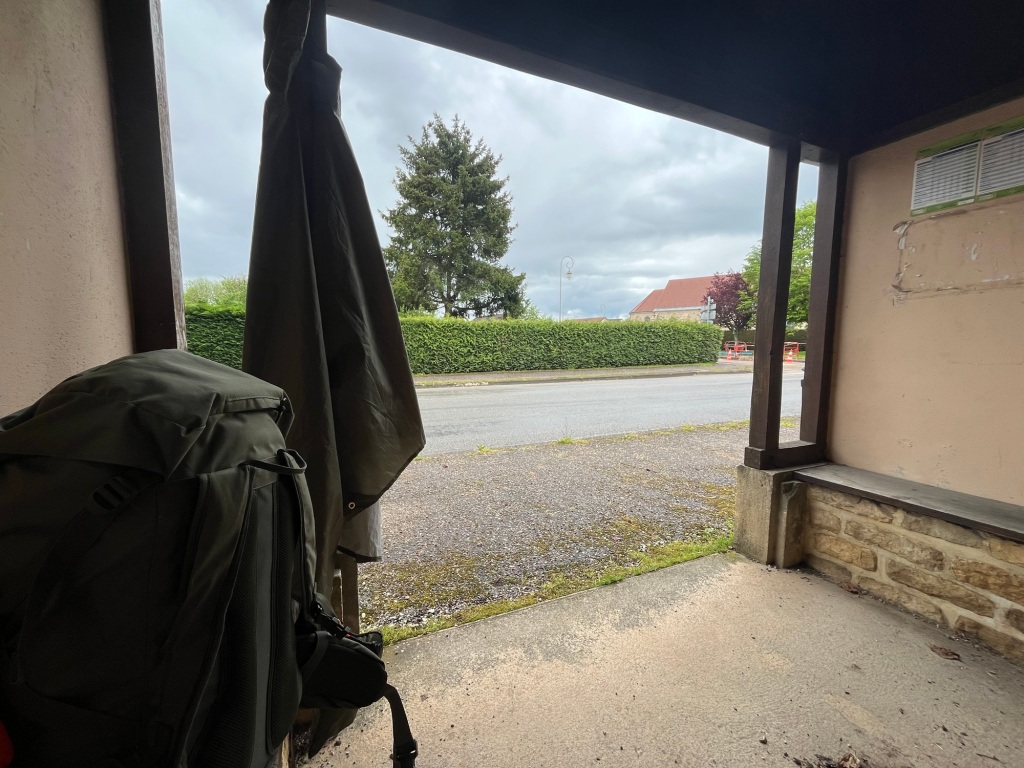
From here I watched the world go by and the sun come out. Le Pailly has a very fine castle, remodelled in the 18th Century, which looks well worth a visit. It wasn’t open while I was there, but I reflected that I probably didn’t have time to visit anyway.
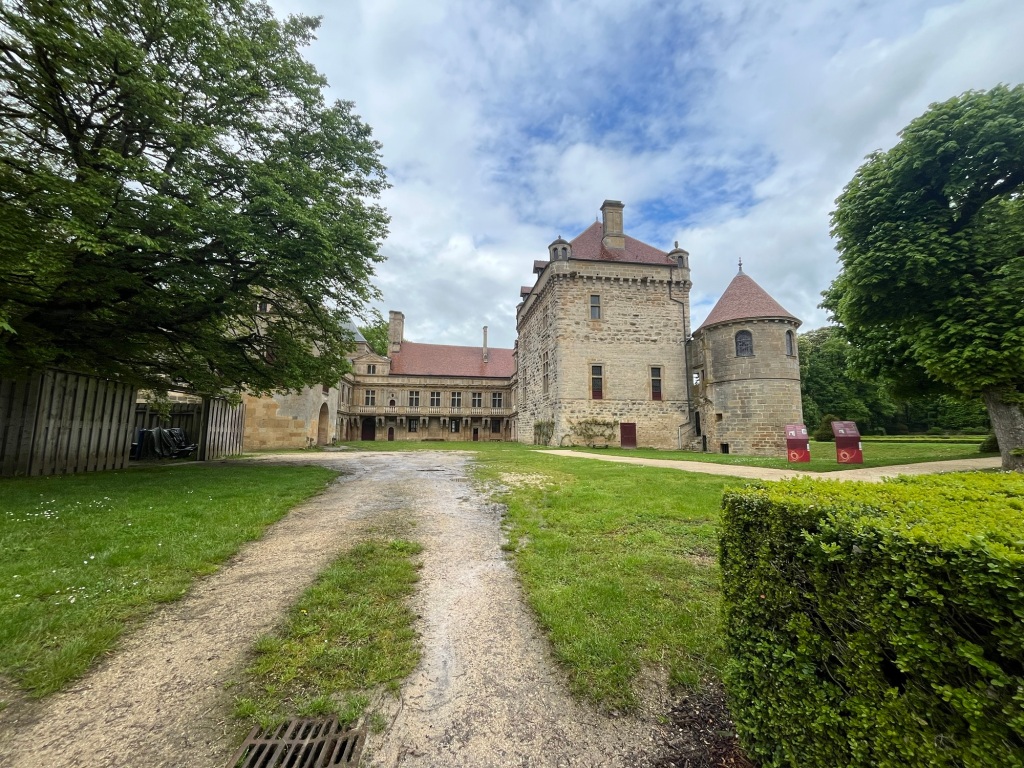
From here my route followed thankfully quieter roads and tracks, through Les Archtots, and rejoining the official route at the hamlet of Grosse-Suave.
Just beyond here were the fascinating remains of a large abbey church, established on an earlier Roman site. Like many others, the monastery here was destroyed at the Revolution, but the quire of the building remains as part of a farm complex.
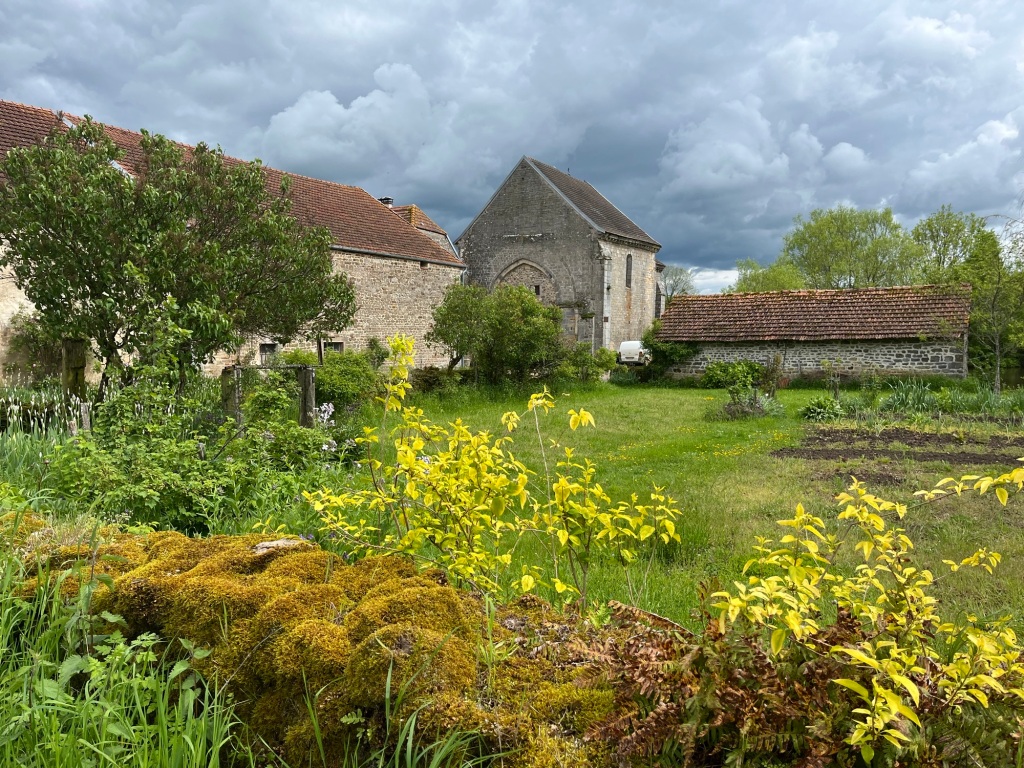
As I watched a bearded man drive a van into the building, which now had several intermediate floors in, I marvelled at the odd lives buildings can lead.
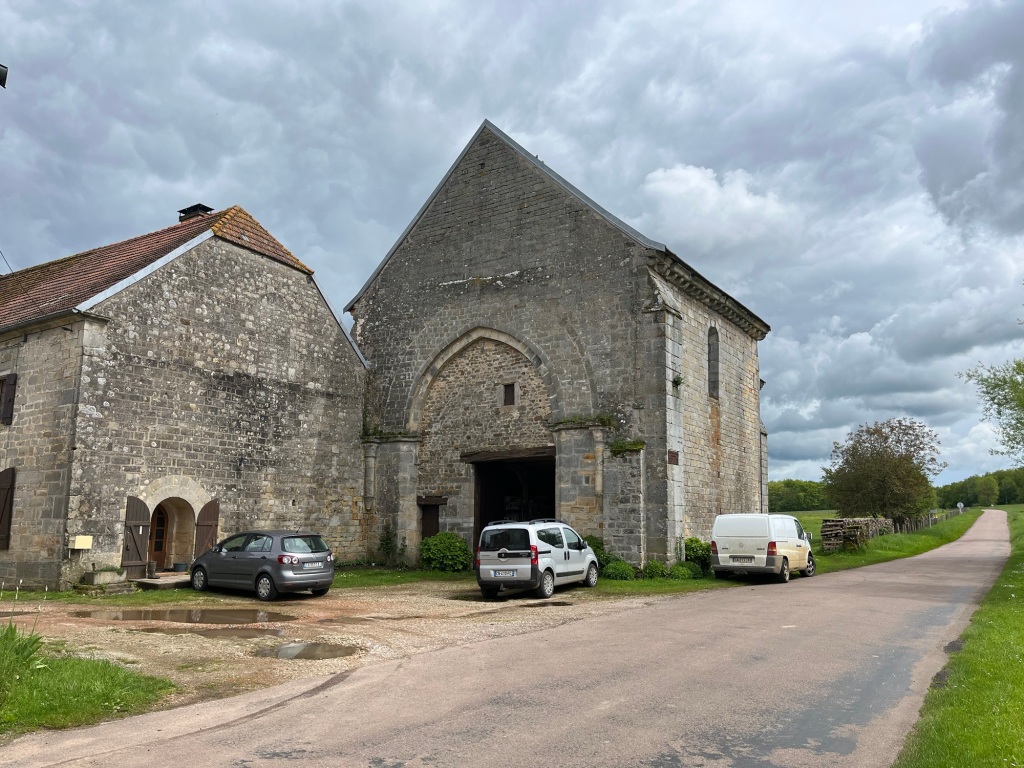
On leaving here, I tried to estimate how long I had left to walk. The afternoon was drawing on and my feet were beginning to tell me about it.
I planned to walk through Grandchamps to cut out a large loop to the west, and then arrive at Coublanc. However, I had a nagging feeling that something was amiss.
In re-checking my emails, I realised that I had indeed misremembered. Coublanc was not my bed for the night, it was Leffond, some 4km further on. At the beginning of the day this would be about 45 minutes walk, at the end of a day, it would mean an extra hour.
This was a blow, but I would not let it get me down. I would probably not arrive until 7pm and I worried that this would be inconvenient for my host who was to let me into the communal gîte.
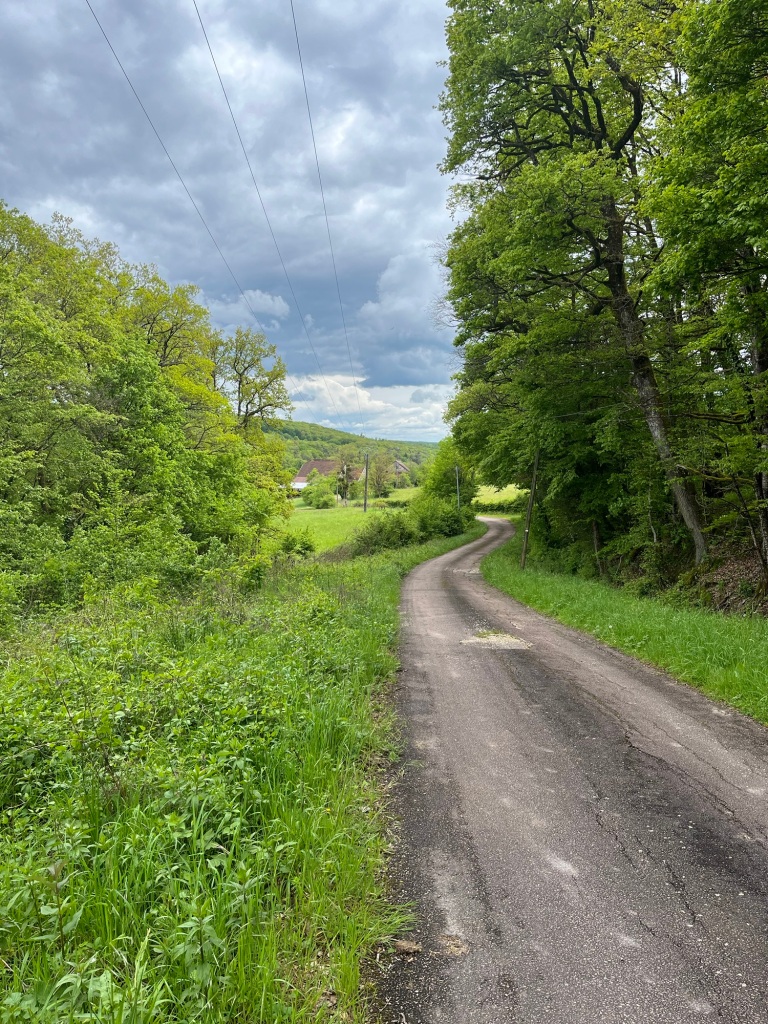
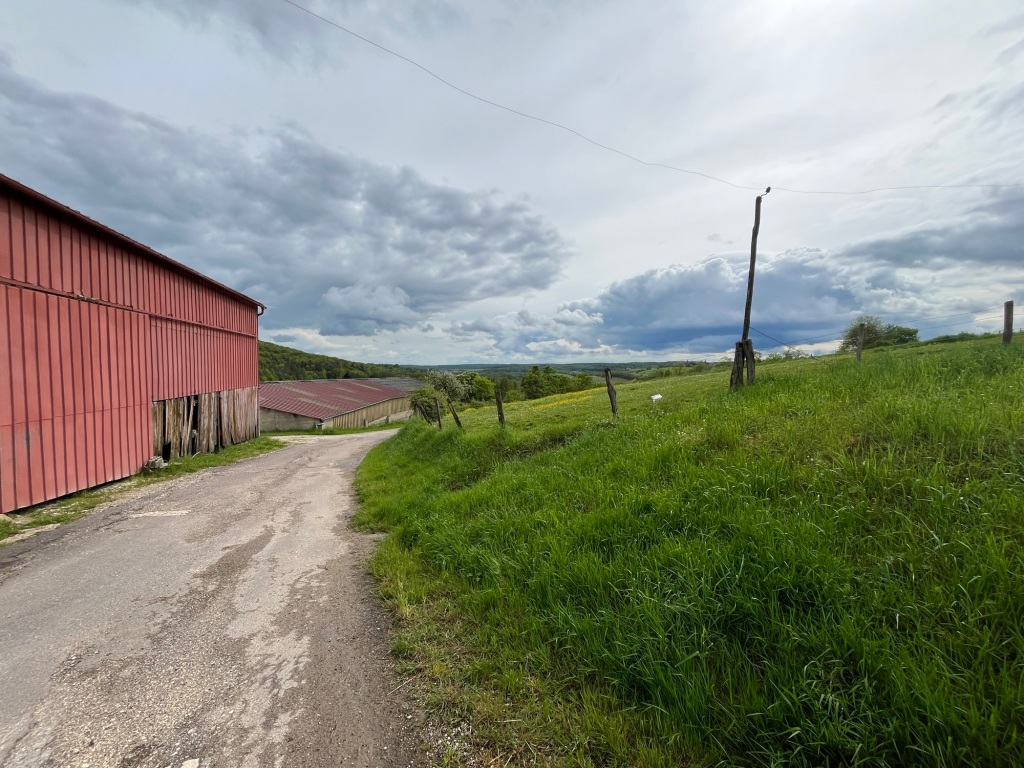
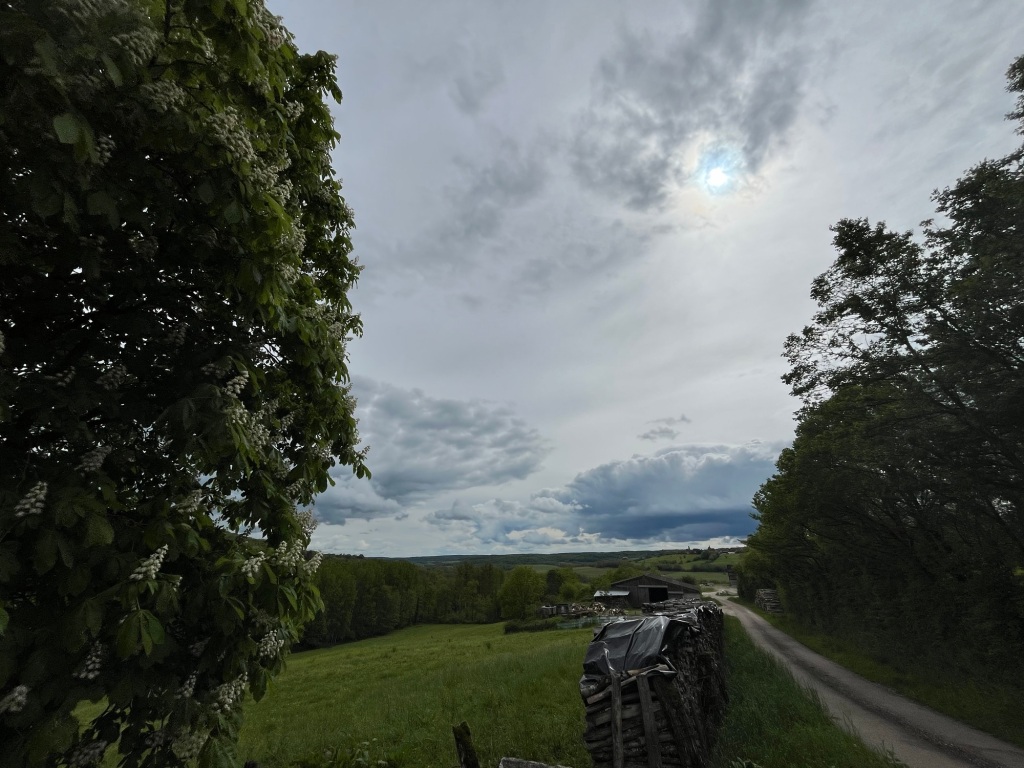
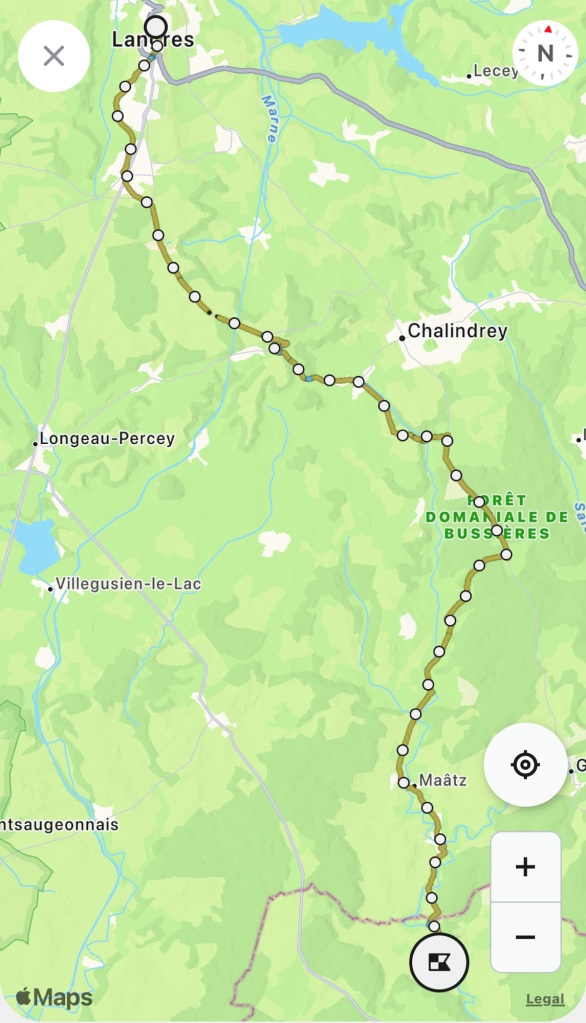
Some beautiful countryside distracted me as I descended through Granchamps and then picked up the valley of the river Salon. Leffond finally hove into view and I texted my host.
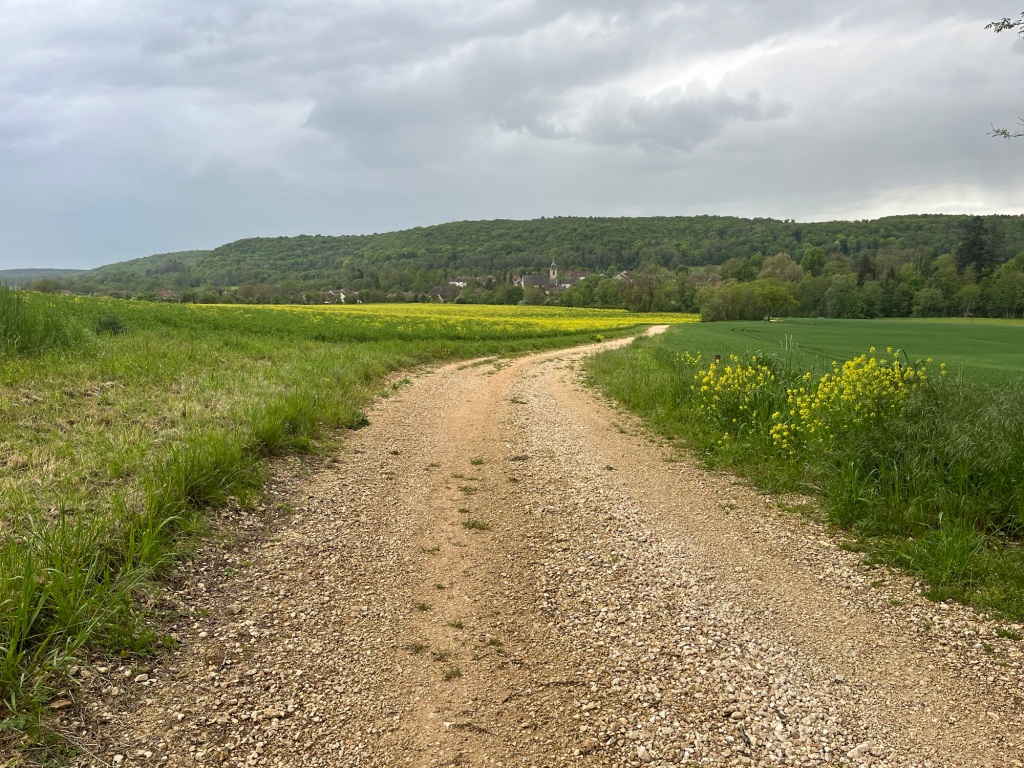
Bernard arrived, full of energy and welcome. Neither of us were full of the other’s language, but with phrases, pointing and enthusiasm we made ourselves understood. I had the gîte to myself, there was soup and a main course (and a quarter bottle of wine) for my evening meal, and plenty for breakfast too.
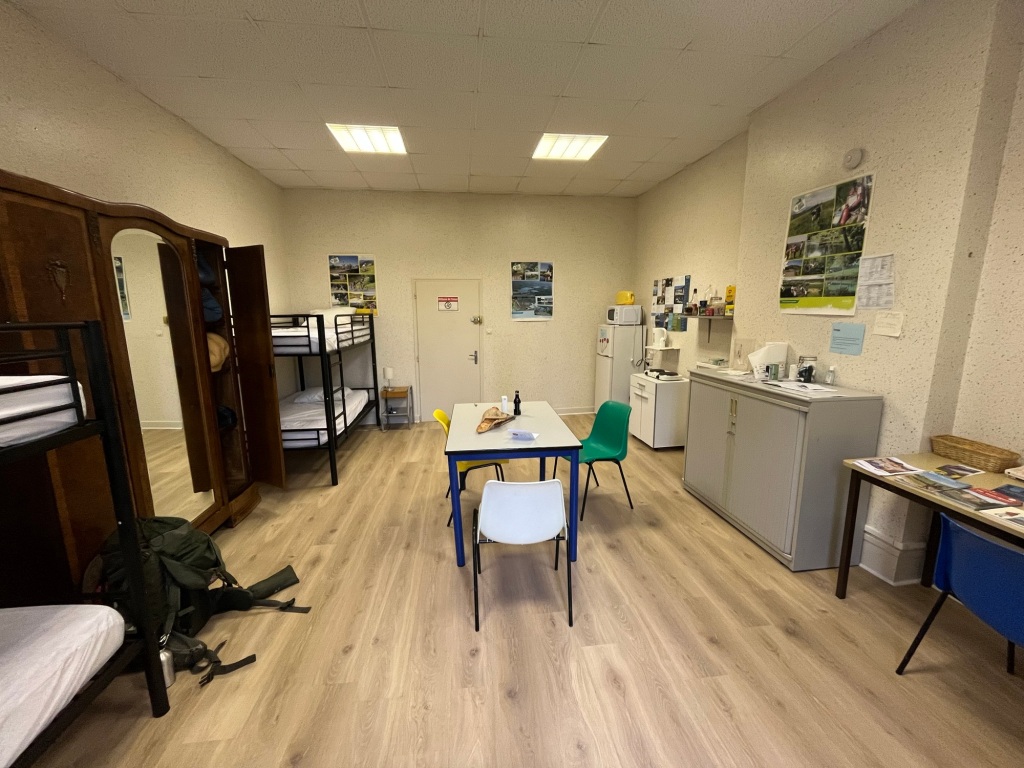
Self reproach turned quickly to gratitude. I received my stamp and thanked Bernard profusely.
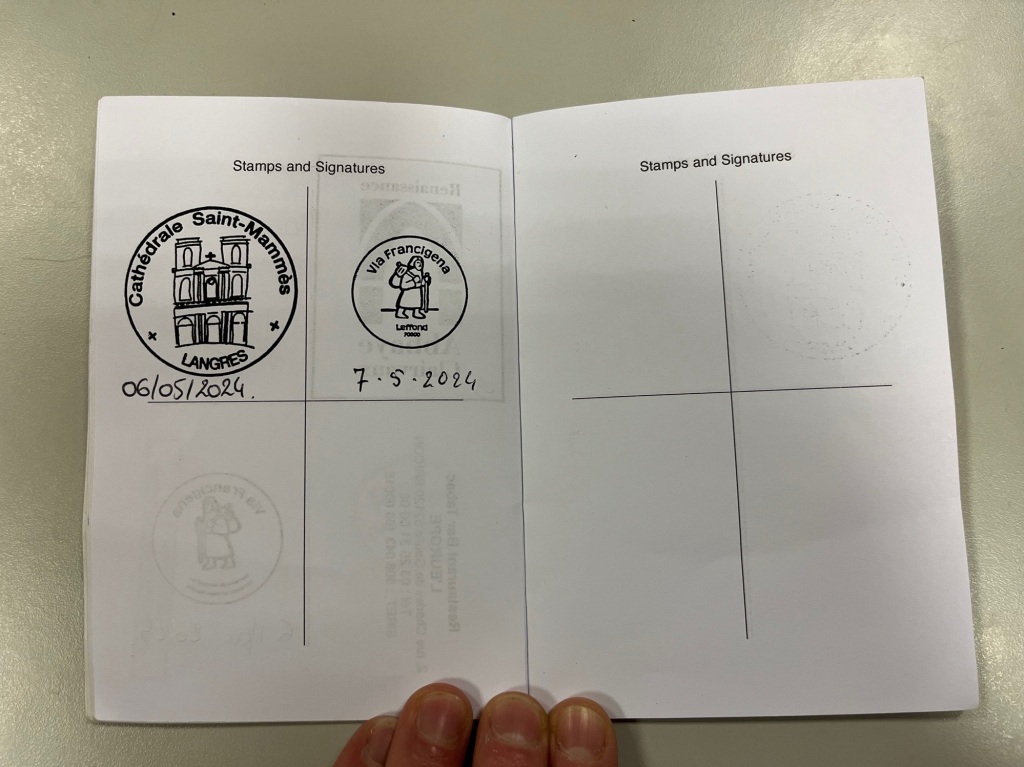
I was tired; it had been a long day, but there was cold beer in the fridge. All was well.
Leave a comment